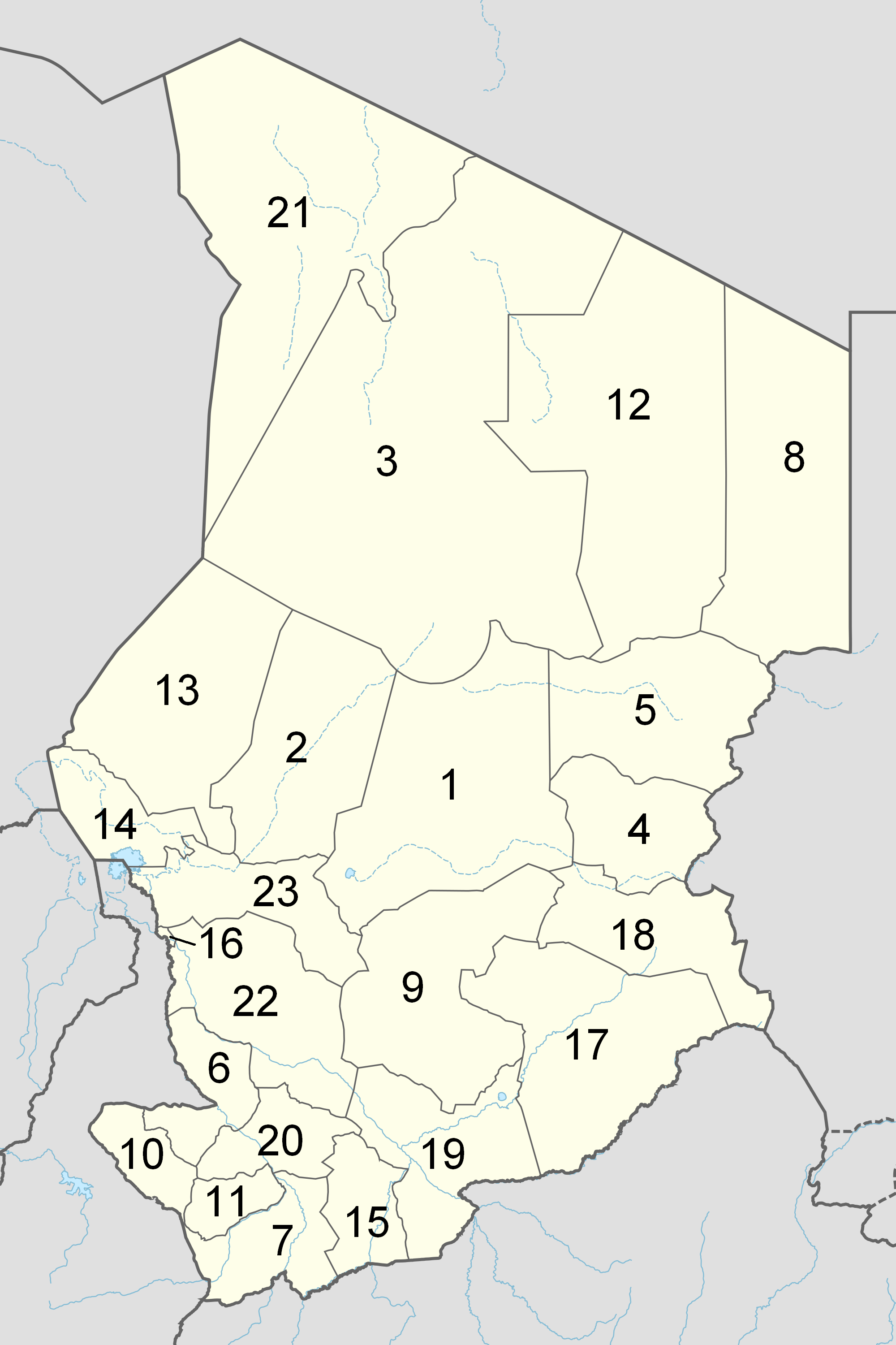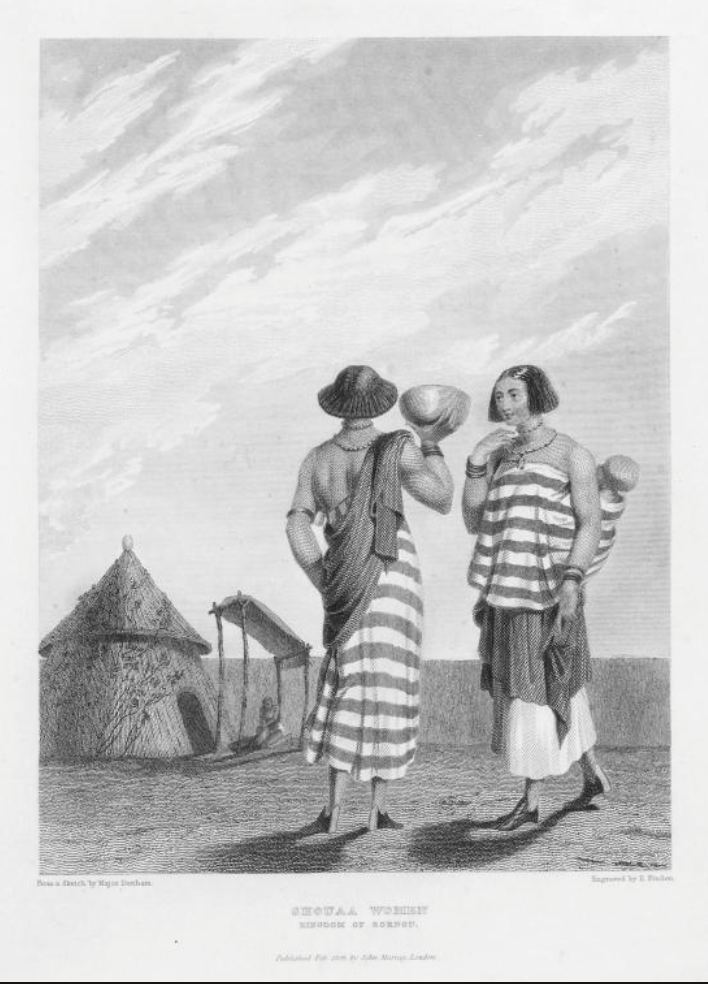|
Salamat Region
Salamat is one of the 23 provinces of Chad, located in the south-east of the country. The region's capital is Am Timan. It corresponds to the former prefecture of the same name. Geography Salamat borders Sila Region to the north, the Central African Republic to the south-east, and Moyen-Chari Region and Guéra Region to the west and north-west. The terrain is generally flat savannah. Half of the Zakouma National Park lies in the province. Settlements Am Timan is the province's capital; other major settlements include Abgué, Abou-Deïa, Am Habilé, Djouna, Haraze, Mangueigne and Mouraye. Demographics As per the 2009 Chadian census, the population of Salamat is 302,301. The main ethnolinguistic groups are Arab groups such as the Baggara (generally speakers of Chadian Arabic), Birgit, Gula groups such as the Gula Iro and Bon Gula, Jonkor Bourmataguil, Kibet, Runga and Toram. Economy Salamat's economy is based on subsistence agriculture, fishery and cotton. ... [...More Info...] [...Related Items...] OR: [Wikipedia] [Google] [Baidu] |
Provinces Of Chad
The Chad, Republic of Chad is divided into 23 provinces. Chad was divided into regions in 2002. It was previously divided into prefectures of Chad, prefectures, and then departments of Chad, departments. On , a new ordinance divided Chad into 23 provinces, 107 departments, and 377 communes. The names of the former regions remained the same but were now called . On , a new ordinance further divided the 23 regions into 120 departments and 454 sub-prefectures. Current provinces This is a list of the provinces of Chad (called regions before 2018), with official population figures from the 2009 census, and estimated population figures for mid 2023. History From independence in 1960 until 1999 it was divided into prefectures of Chad, 14 ''préfectures''. These were replaced in 1999 by departments of Chad, 28 ''départements''. The country was reorganized again in 2002 to produce 18 ''régions''. In 2008, a further four ''régions'' were created, increasing the number to 22. En ... [...More Info...] [...Related Items...] OR: [Wikipedia] [Google] [Baidu] |
Djouna
Djouna is a sub-prefecture of Salamat Region in Chad Chad, officially the Republic of Chad, is a landlocked country at the crossroads of North Africa, North and Central Africa. It is bordered by Libya to Chad–Libya border, the north, Sudan to Chad–Sudan border, the east, the Central Afric .... References Populated places in Chad {{Chad-geo-stub ... [...More Info...] [...Related Items...] OR: [Wikipedia] [Google] [Baidu] |
Toram Language
Toram (also known as Torom and Torum) is an Afro-Asiatic language spoken in central Chad. Speakers have shifted to Chadian Arabic Chadian Arabic (), also known as Shuwa Arabic, Western Sudanic Arabic, or West Sudanic Arabic (WSA), is a variety of Arabic and the first language of 1.9 million people in Chad, both town dwellers and Baggara, nomadic cattle herders. Most of its .... Notes References *Alio, Khalil. 2004. Préliminaires à une étude de la langue kajakse d'Am-Dam, de toram du Salamat, d'ubi du Guéra et de masmaje du Batha-Est (Tchad). In: Gábor Takács (ed.), Egyptian and Semito-Hamitic (Afro-Asiatic) studies: in memoriam W. Vycich,. 229–285. Leiden: Brill. East Chadic languages Languages of Chad {{Chad-stub ... [...More Info...] [...Related Items...] OR: [Wikipedia] [Google] [Baidu] |
Runga People
The Runga are an ethnic group in Chad as well as the Central African Republic, in which they are found in the north and northeast of the country. The majority of the Runga are Muslim. Organization The Runga are distinguished. between the Runga who speak Chadian Arabic and the Runga-Aiki who speak Aiki (and often also Arabic). Despite this linguistic distinction, there is a great cultural homogeneity. Notable People * Mahamat Kamoun, former prime minister of Central African Republic * Noureddine Adam, Central African warlord and ICC fugitive * Abdoulaye Hissène Abdoulaye Hissène (born Akourousoulba, 1 January 1967) is a former Central African warlord, general in the Popular Front for the Rebirth of Central African Republic (FPRC), minister of youth, sanctioned by international institutions for committ ..., Central African warlord Notes Ethnic groups in the Central African Republic Ethnic groups in Chad {{CentralAfricanRepublic-stub ... [...More Info...] [...Related Items...] OR: [Wikipedia] [Google] [Baidu] |
Kibet Language
Aiki is a Maban language of Chad. It consists of two dialects, Runga and Kibet, which are divergent enough to be considered separate languages. Kibet (Kibeit, Kibeet, Kabentang) is spoken in Chad, while Runga (Roungo) is split between Chad and the CAR. Ayki (Aykindang) is a name used in CAR. Possible dialects of Kibet are Dagal (Dagel, Daggal) and Muru (Murru, Muro, Mourro); however, they are poorly known, and Blench (2012) lists them separately. The Aiki area is flooded half the year. Phonology * /p/ can be realized as * /ʃ/ is only found in Arabic Arabic (, , or , ) is a Central Semitic languages, Central Semitic language of the Afroasiatic languages, Afroasiatic language family spoken primarily in the Arab world. The International Organization for Standardization (ISO) assigns lang ... loanwords. * �only exists as an epenthetic vowel. Additionally, the following diphthongs can be found: /ei/, /ɛi/, /ai/, /eu/, /əu/, /au/, /ou/. There are two tones: high an ... [...More Info...] [...Related Items...] OR: [Wikipedia] [Google] [Baidu] |
Jonkor Language
Jonkor Bourmataguil (also known as Djongor Bourmataguil, Dougne, Karakir) is an Afro-Asiatic language spoken in Chad Chad, officially the Republic of Chad, is a landlocked country at the crossroads of North Africa, North and Central Africa. It is bordered by Libya to Chad–Libya border, the north, Sudan to Chad–Sudan border, the east, the Central Afric .... Notes East Chadic languages Languages of Chad {{Chad-stub ... [...More Info...] [...Related Items...] OR: [Wikipedia] [Google] [Baidu] |
Bon Gula Language
Bon Gula, or Bon, is an Adamawa language of Chad Chad, officially the Republic of Chad, is a landlocked country at the crossroads of North Africa, North and Central Africa. It is bordered by Libya to Chad–Libya border, the north, Sudan to Chad–Sudan border, the east, the Central Afric .... References Languages of Chad Bua languages {{AtlanticCongo-lang-stub ... [...More Info...] [...Related Items...] OR: [Wikipedia] [Google] [Baidu] |
Gula Iro Language
The Gula Iro language (autonym ''kùláál'') is a Bua language spoken by some 3,500 people (in 1991) north and east of Lake Iro in southern Chad, between the Bola and Salamat rivers. It has four dialects, according to Pairault: *''páṭóól'' (350 speakers), the northernmost and the least comprehensible to speakers of the other dialects, spoken in and around Badi; *''pòŋààl'' (2,000 speakers), by the north shore of the lake, spoken in and around Boum Kabir, Boum Sarher, and Tordjigel; *''tɩ́ààlà'' (730 speakers), spoken east and south of the lake, including Kouré, Bouni, Tormorhal, and Masidjanga; *''tííṭààl'' (200 speakers), the easternmost, spoken in various villages west of Tamba; to which Ethnologue adds a fifth, Korintal (170 speakers), spoken in Tieou. Gula Iro is very closely related to Zan Gula and Bon Gula, but they are not mutually comprehensible. Phonology The consonants, along with their orthography, are: The vowels are: a, e, ... [...More Info...] [...Related Items...] OR: [Wikipedia] [Google] [Baidu] |
Birgit Language
Birgit (also known as Bergit, Birgid, Berguid) is an Afro-Asiatic language spoken in southeastern Chad. Speakers are found in Moubi Goz Canton, Kouka Margni Sub-prefecture and in Moubi Zarga Canton, Mangalmé Sub-prefecture.Oxfam Oxfam is a British-founded confederation of 21 independent non-governmental organizations (NGOs), focusing on the alleviation of global poverty, founded in 1942 and led by Oxfam International. It began as the Oxford Committee for Famine Relief ... and Office National de Développement Rural (ONDR). 2016. Atlas de la vulnérabilité dans le Guera. Première partie: synthèse regional'. 2nd edition (updated from 2013 edition). PASISAT (Projet d’Appui à l’Amélioration du Système d’Information sur la Sécurité Alimentaire au Tchad). Notes References Jungraithmayr, Herrmann. 2004. Das Birgit eine osttschadische SpracheVokabular. In: Gábor Takács (ed.), ''Egyptian and Semito-Hamitic (Afro-Asiatic) studies: in memoriam W. Vycichl'', 34 ... [...More Info...] [...Related Items...] OR: [Wikipedia] [Google] [Baidu] |
Chadian Arabic
Chadian Arabic (), also known as Shuwa Arabic, Western Sudanic Arabic, or West Sudanic Arabic (WSA), is a variety of Arabic and the first language of 1.9 million people in Chad, both town dwellers and Baggara, nomadic cattle herders. Most of its speakers live in central and southern Chad. Its range is an east-to-west oval in the Sahel. Nearly all of this territory is within Chad and Sudan. It is also spoken elsewhere in the vicinity of Lake Chad in the countries of Cameroon, Nigeria and Niger. Finally, it is spoken in slivers of the Central African Republic. In addition, this language serves as a lingua franca in much of the region. In most of its range, it is one of several local languages and often not among the major ones. Naming and classification This language does not have a native name shared by all its speakers, beyond "Arabic". It arose as the native language of nomadic cattle herders (''baggāra'', Standard Arabic ''baqqāra'' , means 'cattlemen', from ''baqar''). In 1 ... [...More Info...] [...Related Items...] OR: [Wikipedia] [Google] [Baidu] |
Baggara
The Baggāra ( "heifer herder"), also known as Chadian Arabs, are a nomadic confederation of people of mixed Arab and Arabized indigenous African ancestry, inhabiting a portion of the Sahel mainly between Lake Chad and the Nile river near south Kordofan, numbering over six million. They are known as Baggara and Abbala in Sudan, and as Shuwa Arabs in Cameroon, Nigeria and Western Chad. The term Shuwa is said to be of Kanuri origin. The Baggāra mostly speak their distinct dialect, known as Chadian Arabic. However the Baggāra of Southern Kordofan, due to contact with the sedentary population and the Sudanese Arab camel herders of Kordofan, has led to some Sudanese Arabic influence on the dialect of that zone. They also have a common traditional mode of subsistence, nomadic cattle herding, although nowadays many lead a settled existence. Nevertheless, collectively they do not all necessarily consider themselves one people, i.e., a single ethnic group. The term "baggara culture" ... [...More Info...] [...Related Items...] OR: [Wikipedia] [Google] [Baidu] |
Arab
Arabs (, , ; , , ) are an ethnic group mainly inhabiting the Arab world in West Asia and North Africa. A significant Arab diaspora is present in various parts of the world. Arabs have been in the Fertile Crescent for thousands of years. In the 9th century BCE, the Assyrians made written references to Arabs as inhabitants of the Levant, Mesopotamia, and Arabia. Throughout the Ancient Near East, Arabs established influential civilizations starting from 3000 BCE onwards, such as Dilmun, Gerrha, and Magan (civilization), Magan, playing a vital role in trade between Mesopotamia, and the History of the Mediterranean region, Mediterranean. Other prominent tribes include Midian, ʿĀd, and Thamud mentioned in the Hebrew Bible, Bible and Quran. Later, in 900 BCE, the Qedarites enjoyed close relations with the nearby Canaan#Canaanites, Canaanite and Aramaeans, Aramaean states, and their territory extended from Lower Egypt to the Southern Levant. From 1200 BCE to 110 BCE, powerful ... [...More Info...] [...Related Items...] OR: [Wikipedia] [Google] [Baidu] |


